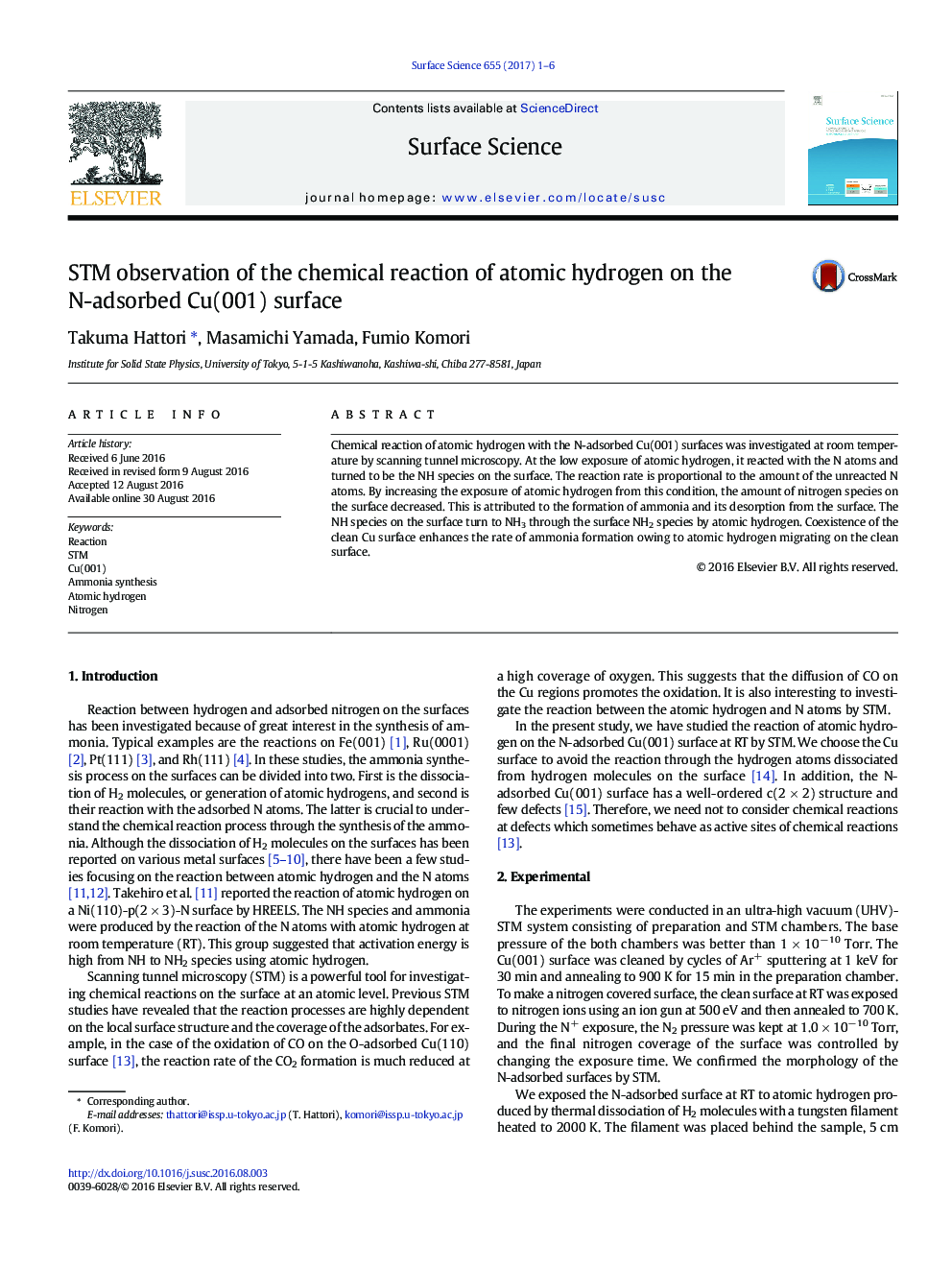| Article ID | Journal | Published Year | Pages | File Type |
|---|---|---|---|---|
| 5421281 | Surface Science | 2017 | 6 Pages |
Abstract
Chemical reaction of atomic hydrogen with the N-adsorbed Cu(001) surfaces was investigated at room temperature by scanning tunnel microscopy. At the low exposure of atomic hydrogen, it reacted with the N atoms and turned to be the NH species on the surface. The reaction rate is proportional to the amount of the unreacted N atoms. By increasing the exposure of atomic hydrogen from this condition, the amount of nitrogen species on the surface decreased. This is attributed to the formation of ammonia and its desorption from the surface. The NH species on the surface turn to NH3 through the surface NH2 species by atomic hydrogen. Coexistence of the clean Cu surface enhances the rate of ammonia formation owing to atomic hydrogen migrating on the clean surface.
Related Topics
Physical Sciences and Engineering
Chemistry
Physical and Theoretical Chemistry
Authors
Takuma Hattori, Masamichi Yamada, Fumio Komori,
